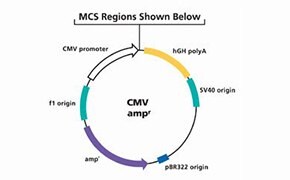Protein Expression

Advancements in genomics, cloning, and numerous molecular biology techniques allow researchers to express heterologous proteins in numerous biological systems. The ability to express recombinant proteins provides researchers with a wide range of powerful downstream applications for further research studies. At small scale, overexpression of proteins may facilitate studies aimed at understanding protein function; whereas, large scale protein production is essential for enzyme, antibody, and vaccine production. Determining optimal cellular growth and protein expression conditions are critical for both small- and large-scale protein expression systems. Whether it is a prokaryotic or eukaryotic expression system that is needed for post-translational modifications, the cell type will largely determine what tools and reagents are required for optimal protein expression.
Related Technical Articles
- Review the 10 steps of glycolysis in the Embden-Meyerhof-Parnas glycolytic pathway. Easily compare reaction stages and buy the enzymes for your life science research.
- The development of genetic engineering and cloning has opened many possibilities of expression and isolation of heterologous proteins for research purposes. Considerable advances in technology have enabled expression and isolation of recombinant proteins in large scale.
- Protein synthesis is a complex, multi-step process involving many enzymes as well as conformational alignment. However, the majority of antibiotics that block bacterial protein synthesis interfere with the processes at the 30S subunit or 50S subunit of the 70S bacterial ribosome.
- FLAG® and 3xFLAG® expression vectors and products for bacterial and mammalian expression vectors, detection and purification of proteins.
- IUBMB-Sigma- Nicholson Metabolic Pathway Charts. The 22nd edition of the IUBMB-Sigma-Nicholson Metabolic Pathways Chart contains updated pathways involved in ATP metabolism in the mitochondria and chloroplast. It contains the Glycolytic Pathway followed by the TCA (Krebs) Cycle and the Respiratory Chain which together lead to the synthesis of ATP by ATP Synthase.
- See All (126)
Related Protocols
- Yeasts are considered model systems for eukaryotic studies as they exhibit fast growth and have dispersed cells.
- Achieve high protein yields with the ALiCE® Cell-Free Protein Synthesis System that allows you to obtain “difficult to produce” proteins in a matter of hours instead of weeks.
- This page details the Duolink® In Situ Short Protocol for fluorescence detection
- Protein synthesis using cell-free protein synthesis reagent kit consists of three stages: preparation of transcription template, transcription and translation.
- See All (19)
Protein Expression Vectors
Expression vectors or plasmids are circular sequences of DNA that are commonly used by researchers as a tool to host the gene encoding their protein of interest. Plasmids containing the gene of interest are subsequently transformed or transfected into cells to overexpress the protein. Plasmids contain various useful elements that facilitate cloning, clone selection, protein expression and purification including but not limited to, a multiple cloning site (MCS), antibiotic resistance genes used for clone selection, unique tags for protein identification and purification, and strong promoter regions to drive protein expression. There are a wide variety of protein expression vectors as many of these elements are interchangeable depending on the specific application needs and the cell type used for protein expression.
Bacterial, Mammalian, and Additional Protein Expression Systems
With fast growth kinetics and plasmid transformations in E. coli in just a few minutes, bacteria are the workhorse organism for producing recombinant proteins. Bacterial protein expression relies on the 30S and 50S ribosomal subunits of the 70S bacterial ribosome. To prevent growth of plasmid-free cells, plasmids containing antibiotic-resistant genes are used as a selection method to identify and isolate bacteria that have incorporated plasmids containing the protein-encoding sequence of interest. While additional genetic sequencing is often necessary to confirm the presence of your gene sequence, numerous antibiotics that block bacterial protein synthesis are commonly used for removing plasmid-free bacteria. In addition to bacteria, insect, yeast, and mammalian cell lines are also commonly used for protein expression. However, unlike bacteria, eukaryotic cell lines contain additional molecular machinery to generate post-translational modifications (e.g. glycosylation) and are often essential for protein functionality and meaningful downstream analyses.
Recombinant Protein Expression Applications
Recombinant proteins are proteins that are encoded within the protein-expressing plasmid and, have been modified for maximal protein expression/purification or mutated to assess protein function. The ability to add, remove, or alter the protein-encoding sequence, even by a single nucleotide, provides researchers with an immensely powerful tool to investigate a large variety of fundamental research questions and elucidate the function of the protein in both healthy and disease tissues. Implications of recombinant protein expression technology extend far beyond fundamental research applications and are essential for the development life-saving therapeutics and vaccines.
To continue reading please sign in or create an account.
Don't Have An Account?